7 Heron
South of Market, San Francisco
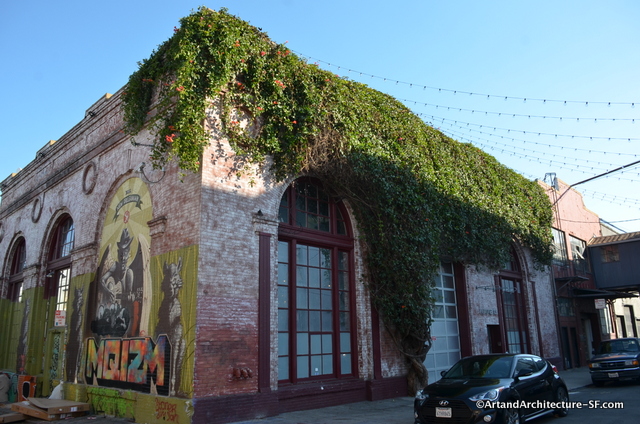
The lovely trumpet vine on this building is hiding a lot of the detail of the brick work, but the buildings history is the real charm.
Built around 1907, this was once part of the Metropolitan Laundry Company and Power Plant.
According to the January 8, 1910 Journal of Electricity, this was a modern, cutting edge plant. It was touted as the largest and most up-to-date in the U.S.
The whole laundry facility was housed in two buildings and covered an acre of land. The second building, at the corner of Berwick and Harrison, is now slated for demolition and can be found here.
There was a tunnel between the two buildings that carried water obtained from five wells, dug 200 feet below the plant.
At the time that SOMA was settled most of it was a marshy swamp, with much completely under water.
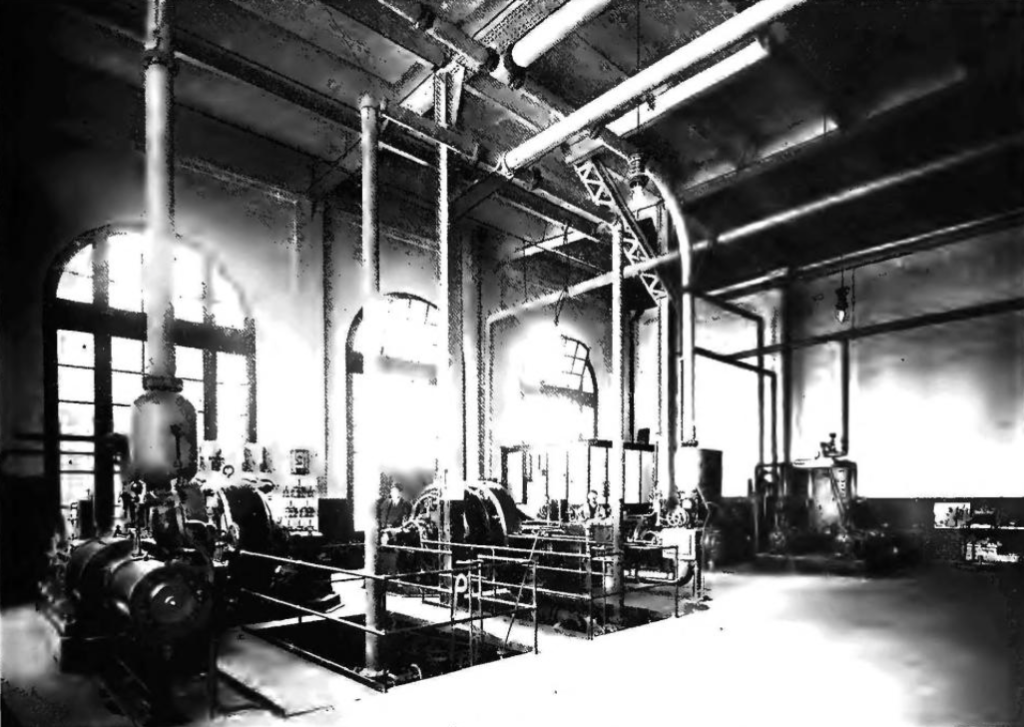
Photo from the Journal of Electricity
Apparently the water was very hard, not great for laundry facilities, so the use of soda ash and lime were used to soften the water. This type of system, with a capacity of 30,000 gallons an hour was called a Kennicott type, and was the largest on the Pacific coast, the details of which can be read in its entirety in the article.
The electricity also supplied 50 electric hand irons, as well as, the “washers, extractors, mangles and ventilating fans”.
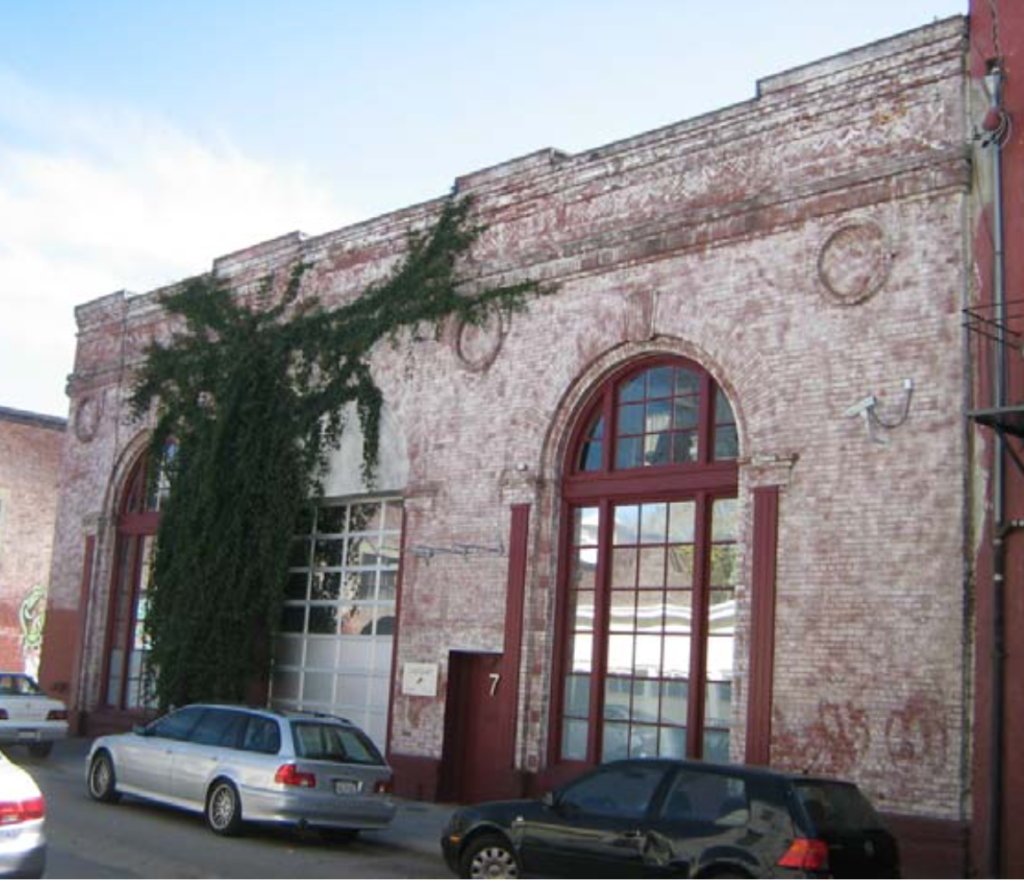
The building before the trumpet vine took over. Photo from City of San Francisco (2009)
The laundry, delivered by wagons, was marked by hand for identification and then segregated into type. This would have been blankets, flannels, toweling and starched pieces that required different treatments. There were 110 washing machines, 40 wringers, 8 manglers, 5 conveyer dryers as well as three lines of shirt machines.
In keeping with the times there was even a collar area with tables, ironers and dampers all operated by machines that were supplied by the power plant.
The November 25, 1905 (page 13) San Francisco Chronicle explained that the building was about to begin construction and that it was to be designed by Meyer and O’Brien at a cost of $50,000 exclusive of the machinery. The building was to house offices, an employee dining room, storerooms and a soap factory on the top floor.
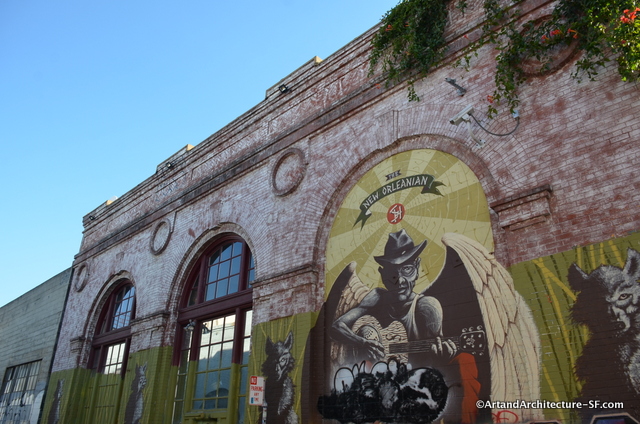
The building now houses Heron Arts
A 1951 law suit between the US Government and The Metropolitan Laundry Company revealed that the Metropolitan Laundry Company was organized in 1903*. At the time they utilized shares of stock to obtain the routes of 11 laundries, 10 in San Francisco and one in Oakland, the value of which was $155,100. They later purchased two more routes for $1500.
With the exception of a period following the 1906 earthquake and fire the company operated continuously from 1903 until 1943.
In February of 1943, during WWII, the United States took possession of the plant for military use, forcing the company to abandon its San Francisco laundry routes. In March 1946 the military gave the laundry back to the company and they resumed operating mainly under a contract with the army. Despite this business, the inability to regain its regular business forced the closure of the plant in December of 1949.
*According to the 1906 City Directory the Laundry was on Albion Way, by the 1907 City Directory they were shown at this spot, listed as 1148 Harrison. Street.
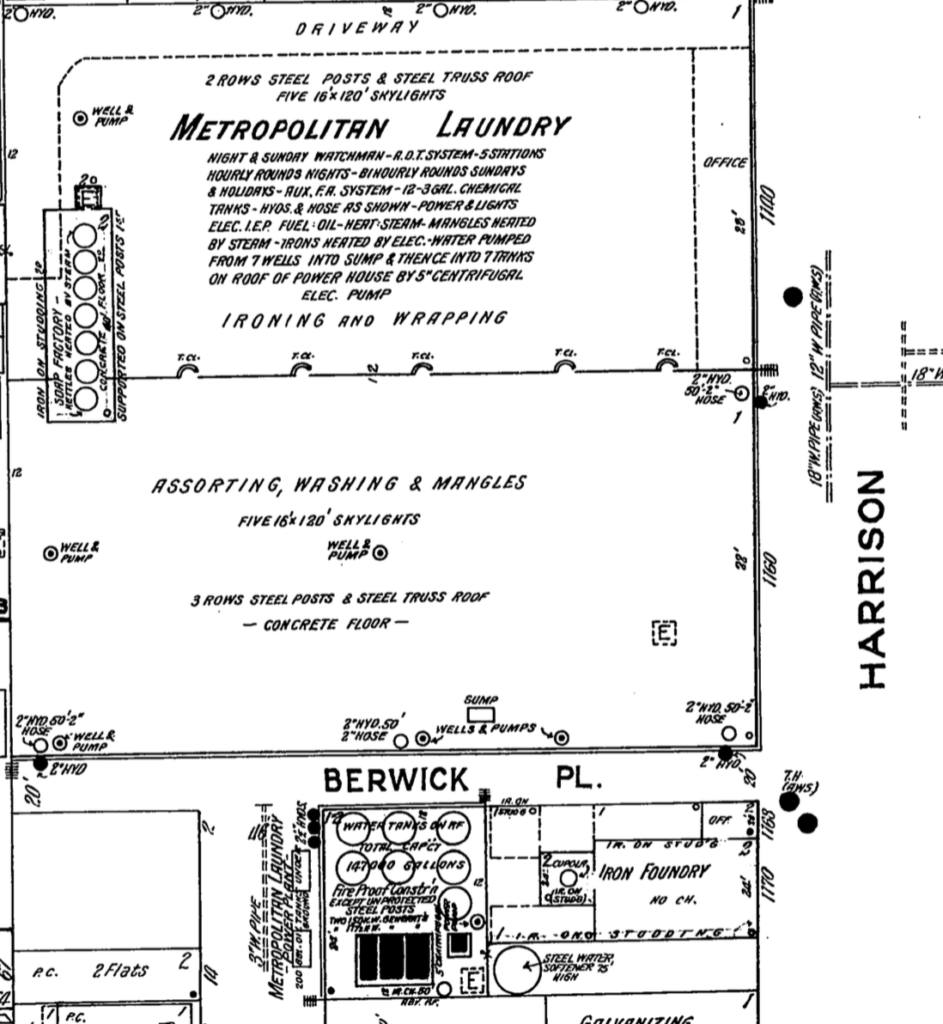
This is from the 1913-1915 Sanborn Map. Volume 2 Page 180